|
[1]
|
G. Volkov A, B. Shtessel Y (2016) Propagation of electrotonic potentials in plants: Experimental study and mathematical modeling. AIMS Biophys 3: 358–379. doi: 10.3934/biophy.2016.3.358

|
|
[2]
|
Hedrich R, Salvador-Recatalà V, Dreyer I (2016) Electrical wiring and long-distance plant communication. Trends Plant Sci 21: 376–387. doi: 10.1016/j.tplants.2016.01.016

|
|
[3]
|
Jane Beilby M, Al Khazaaly S (2016) Re-modeling Chara action potential: I. from Thiel model of Ca2+ transient to action potential form. AIMS Biophys 3: 431–449.
|
|
[4]
|
Hills A, Chen ZH, Amtmann A, et al. (2012) OnGuard, a computational platform for quantitative kinetic modeling of guard cell physiology. Plant Physiol 159: 1026–1042. doi: 10.1104/pp.112.197244

|
|
[5]
|
Blatt MR, Wang Y, Leonhardt N, et al. (2014) Exploring emergent properties in cellular homeostasis using OnGuard to model K+ and other ion transport in guard cells. J Plant Physiol 171: 770–778. doi: 10.1016/j.jplph.2013.09.014

|
|
[6]
|
Gajdanowicz P, Michard E, Sandmann M, et al. (2011) Potassium (K+) gradients serve as a mobile energy source in plant vascular tissues. Proc Natl Acad Sci USA 108: 864–869. doi: 10.1073/pnas.1009777108

|
|
[7]
|
Foster KJ, Miklavcic SJ (2015) Toward a biophysical understanding of the salt stress response of individual plant cells. J Theor Biol 385: 130–142. doi: 10.1016/j.jtbi.2015.08.024

|
|
[8]
|
Schott S, Valdebenito B, Bustos D, et al. (2016) Cooperation through Competition-Dynamics and Microeconomics of a Minimal Nutrient Trade System in Arbuscular Mycorrhizal Symbiosis. Front Plant Sci 7: 912.
|
|
[9]
|
Epstein E, Rains DW, Elzam OE (1963) Resolution of dual mechanisms of potassium absorption by barley roots. Proc Natl Acad Sci USA 49: 684–692. doi: 10.1073/pnas.49.5.684

|
|
[10]
|
Hille B (2001) Ion channels of excitable membranes, 3rd Ed., Sunderland, MA: Sinauer.
|
|
[11]
|
Gajdanowicz P, Garcia-Mata C, Gonzalez W, et al. (2009) Distinct roles of the last transmembrane domain in controlling Arabidopsis K+ channel activity. New Phytol 182: 380–391. doi: 10.1111/j.1469-8137.2008.02749.x

|
|
[12]
|
Riedelsberger J, Sharma T, Gonzalez W, et al. (2010) Distributed structures underlie gating differences between the K in channel KAT1 and the Kout channel SKOR. Mol Plant 3: 236–245. doi: 10.1093/mp/ssp096

|
|
[13]
|
Garcia-Mata C, Wang J, Gajdanowicz P, et al. (2010) A minimal cysteine motif required to activate the SKOR K+ channel of arabidopsis by the reactive oxygen species H2O2. J Biol Chem 285: 29286–29294. doi: 10.1074/jbc.M110.141176

|
|
[14]
|
González W, Riedelsberger J, Morales-Navarro SE, et al. (2012) The pH sensor of the plant K+-uptake channel KAT1 is built from a sensory cloud rather than from single key amino acids. Biochem J 442: 57–63. doi: 10.1042/BJ20111498

|
|
[15]
|
Lefoulon C, Karnik R, Honsbein A, et al. (2014) Voltage-sensor transitions of the inward-rectifying K+ channel kat1 indicate a latching mechanism biased by hydration within the voltage sensor. Plant Physiol 166: 960–975. doi: 10.1104/pp.114.244319

|
|
[16]
|
Hedrich R, Bregante M, Dreyer I, et al. (1995) The voltage-dependent potassium-uptake channel of corn coleoptiles has permeation properties different from other K+ channels. Planta 197: 193–199.
|
|
[17]
|
Hedrich R, Moran O, Conti F, et al. (1995) Inward rectifier potassium channels in plants differ from their animal counterparts in response to voltage and channel modulators. Eur Biophys J 24: 107–115.
|
|
[18]
|
Becker D, Dreyer I, Hoth S, et al. (1996) Changes in voltage activation, Cs+ sensitivity, and ion permeability in H5 mutants of the plant K+ channel KAT1. Proc Natl Acad Sci USA 93: 8123–8128. doi: 10.1073/pnas.93.15.8123

|
|
[19]
|
Dreyer I, Antunes S, Hoshi T, et al. (1997) Plant K+ channel α-subunits assemble indiscriminately. Biophys J 72: 2143–2150. doi: 10.1016/S0006-3495(97)78857-X

|
|
[20]
|
Dietrich P, Dreyer I, Wiesner P, et al. (1998) Cation sensitivity and kinetics of guard-cell potassium channels differ among species. Planta 205: 277–287. doi: 10.1007/s004250050322

|
|
[21]
|
Dreyer I, Becker D, Bregante M, et al. (1998) Single mutations strongly alter the K+-selective pore of the K(in) channel KAT1. FEBS Lett 430: 370–376. doi: 10.1016/S0014-5793(98)00694-2

|
|
[22]
|
Brüggemann L, Dietrich P, Dreyer I, et al. (1999) Pronounced differences between the native K+ channels and KAT1 and KST1 alpha-subunit homomers of guard cells. Planta 207: 370–376. doi: 10.1007/s004250050494

|
|
[23]
|
Dreyer I, Michard E, Lacombe B, et al. (2001) A plant Shaker-like K+ channel switches between two distinct gating modes resulting in either inward-rectifying or "leak" current. FEBS Lett 505: 233–239. doi: 10.1016/S0014-5793(01)02832-0

|
|
[24]
|
Michard E, Lacombe B, Porée F, et al. (2005) A unique voltage sensor sensitizes the potassium channel AKT2 to phosphoregulation. J Gen Physiol 126: 605–617. doi: 10.1085/jgp.200509413

|
|
[25]
|
Michard E, Dreyer I, Lacombe B, et al. (2005) Inward rectification of the AKT2 channel abolished by voltage-dependent phosphorylation. Plant J 44: 783–797. doi: 10.1111/j.1365-313X.2005.02566.x

|
|
[26]
|
Xicluna J, Lacombe B, Dreyer I, et al. (2007) Increased functional diversity of plant K+ channels by preferential heteromerization of the Shaker-like subunits AKT2 and KAT2. J Biol Chem 282: 486–494. doi: 10.1074/jbc.M607607200

|
|
[27]
|
Geiger D, Becker D, Vosloh D, et al. (2009) Heteromeric AtKC1.AKT1 channels in Arabidopsis roots facilitate growth under K+-limiting conditions. J Biol Chem 284: 21288–21295.
|
|
[28]
|
Held K, Pascaud F, Eckert C, et al. (2011) Calcium-dependent modulation and plasma membrane targeting of the AKT2 potassium channel by the CBL4/CIPK6 calcium sensor/protein kinase complex. Cell Res 21: 1116–1130. doi: 10.1038/cr.2011.50

|
|
[29]
|
Garriga M, Raddatz N, Véry AA, et al. (2017) Cloning and functional characterization of HKT1 and AKT1 genes of Fragaria spp.-Relationship to plant response to salt stress. J Plant Physiol 210: 9–17.
|
|
[30]
|
Dreyer I, Müller-Röber B, Köhler B (2004) Voltage gated ion channels, Blatt MR, Annual Plant Reviews, Membrane Transport in Plants, Oxford: Blackwell Publishing, 150–192.
|
|
[31]
|
Eyring H (1935) The activated complex in chemical reactions. J Chem Phys 3: 107. doi: 10.1063/1.1749604

|
|
[32]
|
Dreyer I, Blatt MR (2009) What makes a gate? The ins and outs of Kv-like K+ channels in plants. Trends Plant Sci 14: 383–390.
|
|
[33]
|
Sharma T, Dreyer I, Riedelsberger J (2013) The role of K(+) channels in uptake and redistribution of potassium in the model plant Arabidopsis thaliana. Front Plant Sci 4: 224.
|
|
[34]
|
Sharma T, Dreyer I, Kochian L, et al. (2016) The ALMT family of organic acid transporters in plants and their involvement in detoxification and nutrient security. Front Plant Sci 7: 1488.
|
|
[35]
|
Loew LM, Schaff JC (2001) The Virtual Cell: a software environment for computational cell biology. Trends Biotechnol 19: 401–406. doi: 10.1016/S0167-7799(01)01740-1

|
|
[36]
|
Brüggemann L, Dietrich P, Becker D, et al. (1999) Channel-mediated high-affinity K+ uptake into guard cells from Arabidopsis. Proc Natl Acad Sci USA 96: 3298–3302. doi: 10.1073/pnas.96.6.3298

|











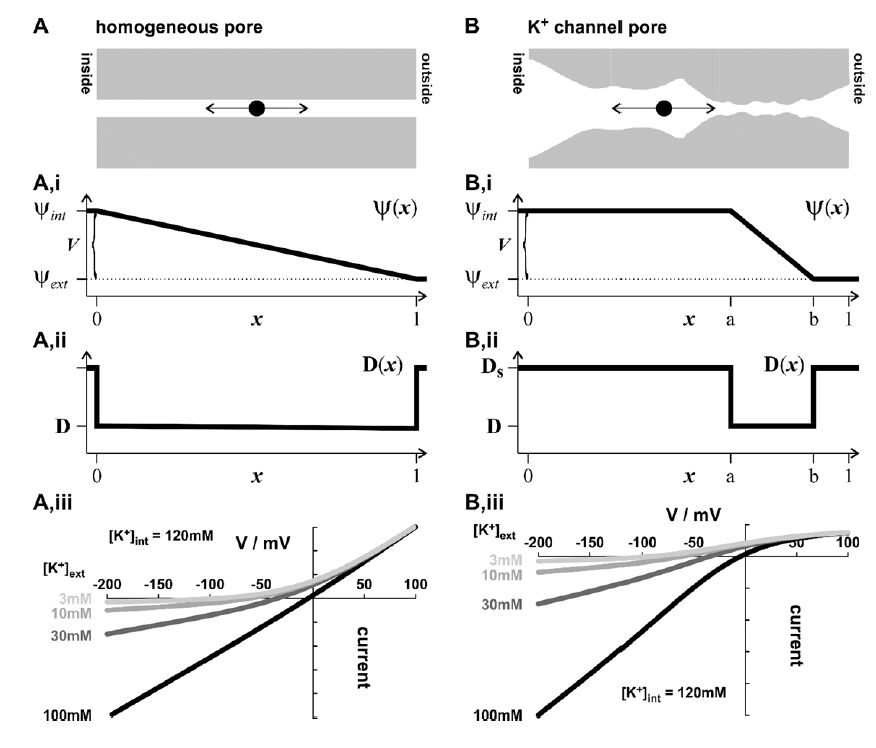
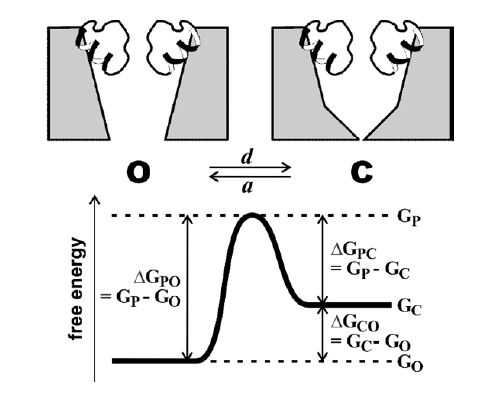

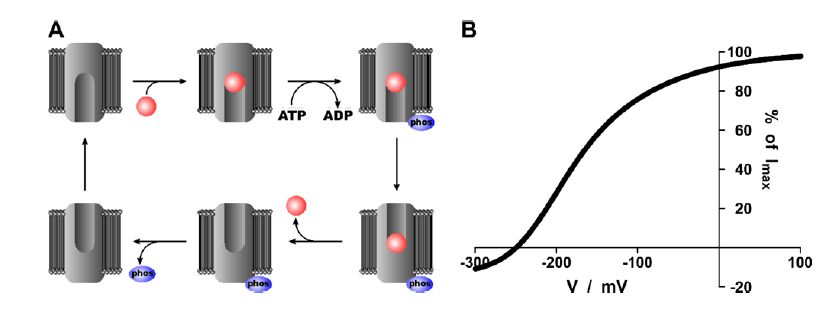
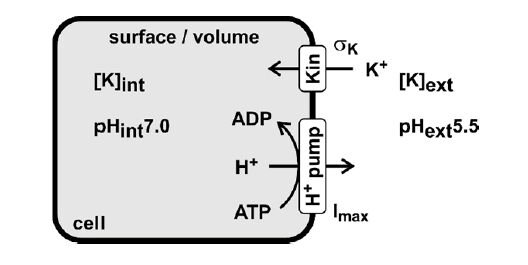



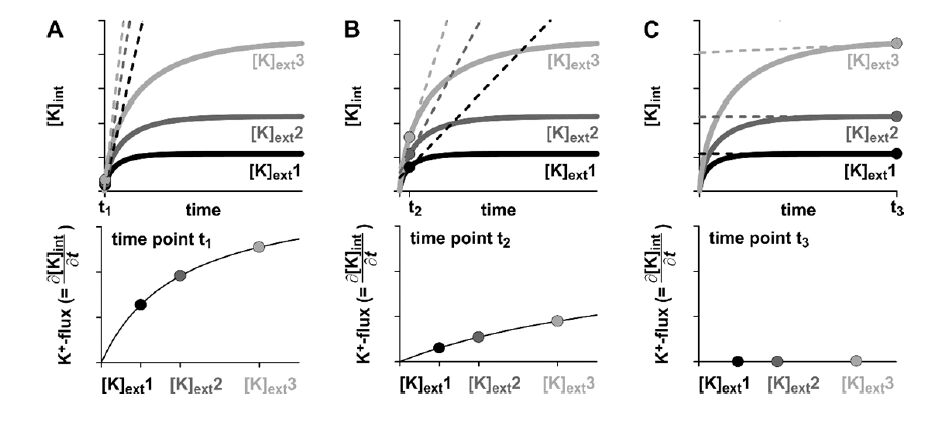


 DownLoad:
DownLoad: